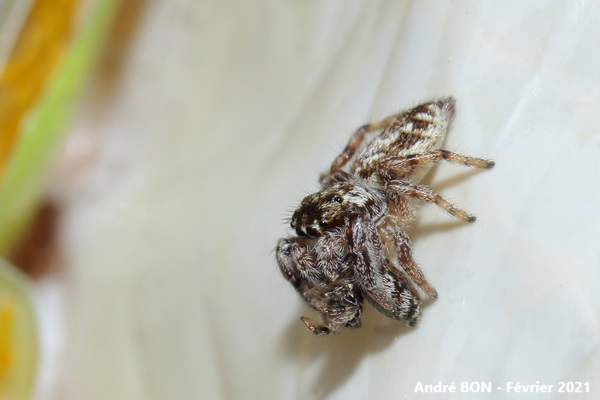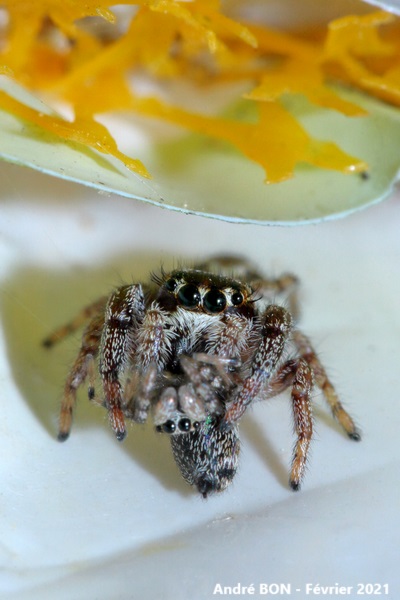


| Macaroeris nidicolens (Walckenaer, 1802) |



|
|
Scientific name: Macaroeris nidicolens (Walckenaer, 1802) Common name: French name: Order: Araneae Family: Salticidae Size: Females: 5 to 7.7 mm; Males: 4 to 6.7 mm. Biotope: Bushes, shrubs with a preference for dry, sunny or semi-shaded places. Web: No web. Observation period: All year round. Geographic area: Macaronesia, Europe except Nordic countries, North Africa, Turkey, Caucasus, Turkmenistan, Iran. Introduced to Sri Lanka. |
Macaroeris nidicolens is a small jumping spider with a fairly variable appearance. Females are generally light brown in colour. They have a large white moustache The cephalothorax bears a white triangular patch that extends between the two large frontal eyes. On each side, a dark mark connects the eyes, leaving a white patch between the lateral and medial frontal eyes. The sides of the head bear, behind the lateral frontal eyes, a tuft of long, erect and curved black hairs which resemble long eyebrows. The abdomen is marked with a pale arched band at the front and then with eight more or less visible oblique spots. The pale spots near the apex sometimes appear arranged in a cross. Males are darker in colour and have a first pair of legs that is significantly larger than the other pairs. The frontal eyes are ringed with reddish. The cephalothorax has two lines of white hairs on the sides and two large light spots behind the posterior eyes. The patterns on the abdomen are similar for both sexes. |
| [To know more about the Macaroeris nidicolens] [Next picture] [Top] |

|
I surprised this little jumping spider on a vertical pipe in the yard of my old childhood farm. The white moustache, the white spots between the eyes, the long curved eyebrows and the abdominal markings are enough to identify Macaroeris nidicolens. This is the first time I observe this species. It seems it captured another spider a little smaller than itself. |
| [To know more about the Macaroeris nidicolens] [Next picture] [Previous picture] [Top] |

|
Side view. |
| [To know more about the Macaroeris nidicolens] [Previous picture] [Top] |

|
Front view. It appears that the prey is a spider of the same species. I was unable to get a top view. This spider dropped into the tall grass after three photos and disappeared. |